| Umělec magazine 1998/6-7 >> Interview with the new General Director of the National Gallery, Dagmar Šefčíková | List of all editions. | ||||||||||||
|
|||||||||||||
Interview with the new General Director of the National Gallery, Dagmar ŠefčíkováUmělec magazine 1998/6-701.06.1998 Lenka Lindaurová | q&a | en cs |
|||||||||||||
|
What was the background of your recent appointment. Culture Minister Pavel Dostál calls it a forced administration...
I am properly appointed to the office of the General Director with a decree limiting my term by call for a tender for the position. I’m not sure what kind of terms the Minister is using in some interviews but forced administration seems to be a term for banking industry. It sounds a bit frightening. I haven’t heard it myself and I don’t know what the Minister means by the term. I know that by June 15, 1999, a tender will be called for the position of the General Director where some sort of criteria will be set. Most likely, I will take part in the tender myself. I would think that the term forced administration came about in response to non-transparent financing of the National Gallery and media exposure of clashes between the Modern and Contemporary Art Collection Director and the General Director who had been accused of tunneling the institution. What is the state of the National Gallery as left by your predecessor, Mr. Zlatohlávek? If we accept the term forced administration, it concerns purely economic and organizational issues which absolutely follow up on each other. The Gallery’s economic situation, as I’ve come to know it during the past three weeks, looks like this: unpaid invoices amounting to 14 million crowns ($493,000 US). The amount includes, of course, various types of expenses such as a debt to the Gallery’s former Chairman of the Board of Directors, Mr. Messer, for his travel expenses which is difficult to solve in terms of current Ministry regulations. There are also debts for catalogues, rent, and there are also things which are quite hard to understand such as debts for hexachromes. Such small amounts should not make this chain even longer. What I was most shocked by right at the beginning, however, was the most pressing problem which is a loan of 150 million crowns ($5,282,000 US) for completion of Veleržní palác (seat of the National Gallery’s Modern and Contemporary Art Collection). The Finance Ministry asked the National Gallery in writing to return the money but the Gallery never answered the request. The Finance Ministry is suggesting that it will strictly demand pay offs. This is at least a three-year-old issue. Why hasn’t it been dealt with before? When I was looking for that written request, I found out from colleague Zlatohlávek that he took the letter to the Culture Ministry because the Gallery could not afford to pay 150 million. I found out that there was no copy, there was no proof of correspondence concerning this issue. I had to look up documents from five different sources. There was no continual documentation here, as if 150 million was funny money. The National Gallery is not able to pay the debt, though? We will try and look for some reasonable solution. We just have to come to an agreement with both Ministries and make coordinated progress in this matter. Today, I received a copy of a letter which Finance Minister Svoboda had sent to Culture Minister Dostál. In the letter, he notified the Gallery that on July 1 he had sent an amendment to the loan contract which would put off back payments until the beginning of 1999. Before, everybody was sort of hoping that the loan would slowly transform itself into non-returnable loan which could be considered a special subsidy. This all, however, has to be based on contracts. Do you believe that the loan will be transformed into a subsidy? I cannot answer this today. We will have to work with the current arguments and documentation of current economic situation. I cannot foresee the Finance Ministry’s decision. Do you think that former General Director Zlatohlávek is responsible for these financial problems? Look, responsibility for a subsidized organization to its founder always lays on the director, the statutory representative. What authorities he further distributes, how he establishes control of relations within the organization and clear responsibilities is all up to him. A director may be a genius scientist but he may not be talented at managerial work. The situation gets out of his control and even worse things may happen. I’m convinced that there was no bad intention on his part but I don’t think he was a type of person who would devote all his talent and energy to the decision to become a director. Being a director, whether it is a small or big organization, is in a way missionary work. One has to partially or completely give up his or her own expert work they were doing before. Zlatohlávek was responsible for the National Gallery, for fulfilling its mission statement, for following the organizational rules and if this got out of his control, then he was a bad director. But he might not be a bad person. Do you know today whether former Modern and Contemporary Art Collection Director Jaroslav Anděl’s complains concerning tunneling of Veletržní palác were justified? From what I’ve had a chance to see in the invoice audit, this interpretation of affairs is based on lack of knowledge of regulations. This was not tunneling. There exists a term – depreciation. In Veletržní palác as a new building, the amount of depreciation was enormous. Depreciation is formally transformed into financial sources for investment. There is no regulation which says that money coming from depreciation of one building has to be used in the same place especially if another building is in a state of collapse. I cannot even imagine what colleague Anděl meant by tunneling. When a qualified audit is finished here, we can have an answer to this. The National Gallery has never had a plan for internal audits, there was not a system worked out either. Some things were played down and were not taken seriously. We have to treat the buildings and collections as a state property. We are in charge of the property and we have to be efficient. We also have to follow regulations concerning subsidies from the state budget. Just like anywhere in the world. Your predecessor was trying to make the collections in some way autonomous and they were, indeed, very autonomous. What do you think of this issue and what do you think of proposals to make Veletržní palác completely autonomous? Those are two questions. I’ll start from the more general part, i.e. whether my predecessor took some steps in the autonomy issue and whether he did so correctly or wrongly. He initiated a situation which today forms a proposal of the organizational structure from the fall of 1994. I think that autonomy of the collections in all their scientific matters and into a certain extent the practicalities is a very good thing. This was a necessary step because there is no institution here that went through so many reorganizations. There were, however, further autonomization steps which were completely wrong. Moreover, they were wrong in a quite peculiar way. The Gallery issued a document which states conditions for administration of the collections and nobody ever cancelled this old regulation. Yet things are completely different today. Theoretically, if there was some sort of mean auditor here, he would find out that due to autonomy, the regulation was no longer implemented. A continuous department ceased to exist in the Gallery whether it had once been called a central department or an administration log department. Anyway, within this department there existed a thirty-year-long file of guarantee contracts which was untouchable. In any moment in time, you could trace down the whereabouts of the collections’ items. After the autonomy process, you have to ask for objects for loan in each of the collections separately and follow their own regulations. You think, then, that the form for the National Gallery collections would be their partial autonomy with a central department providing services for them? Yes, this is functional. Similar institutions around the world also have some central services if they want to work efficiently and professionally. Can such a chaos in the collections’ administration have a negative impact on the physical artworks? The difference between the conditions and behavior of the individual collections, say during distribution or accounting, do not represent danger for the objects themselves. They just cause that the National Gallery has a bad reputation from the professional point of view. But ultimately – they may. It is always better if one person overviews conditions and terms of contracts and their fulfilling, a person working together with the collections and making sure that nothing gets left out. What is the situation with the damaged Picasso painting, one of the cases talked about in connection with Zlatohlávek’s resignation? The rumor is that the National Gallery is not getting any damages from the insurance company. No, it’s not. Because the Gallery did not meet the insurance conditions? No, because the Luisiana museum, where the painting was in loan, did not meet them. We are now negotiating compensations. We haven’t got any answer as yet. Zlatohlávek did not think of the possible consequences of exhibiting the piece without an air-conditioning box which was demanded on the spot. On the other hand, I think that if everything worked the way it was supposed to, he would not loan the picture.
01.06.1998
Recommended articles
|
|||||||||||||
|
04.02.2020 10:17
Letošní 50. ročník Art Basel přilákal celkem 93 000 návštěvníků a sběratelů z 80 zemí světa. 290 prémiových galerií představilo umělecká díla od počátku 20. století až po současnost. Hlavní sektor přehlídky, tradičně v prvním patře výstavního prostoru, představil 232 předních galerií z celého světa nabízející umění nejvyšší kvality. Veletrh ukázal vzestupný trend prodeje prostřednictvím galerií jak soukromým sbírkám, tak i institucím. Kromě hlavního veletrhu stály za návštěvu i ty přidružené: Volta, Liste a Photo Basel, k tomu doprovodné programy a výstavy v místních institucích, které kvalitou daleko přesahují hranice města tj. Kunsthalle Basel, Kunstmuseum, Tinguely muzeum nebo Fondation Beyeler.
|







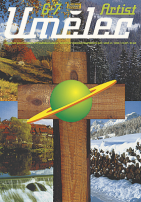




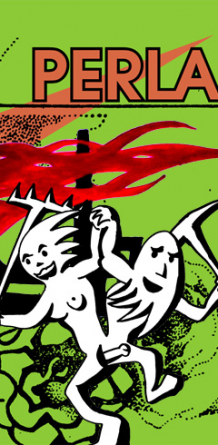






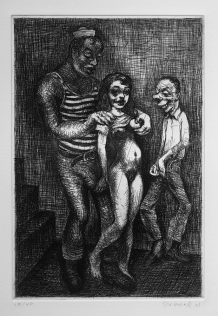




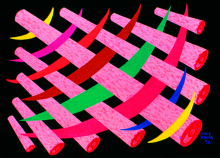
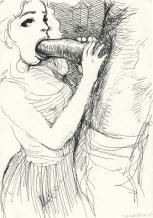
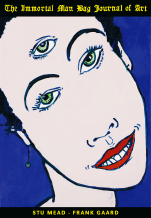



 New book by I.M.Jirous in English at our online bookshop.
New book by I.M.Jirous in English at our online bookshop.
Comments
There are currently no comments.Add new comment